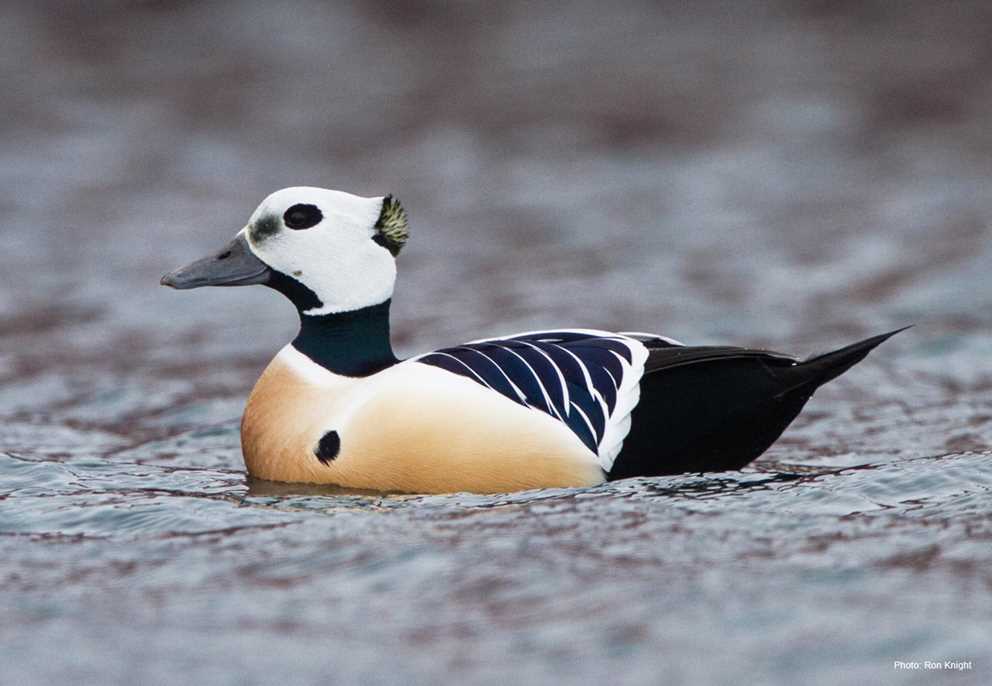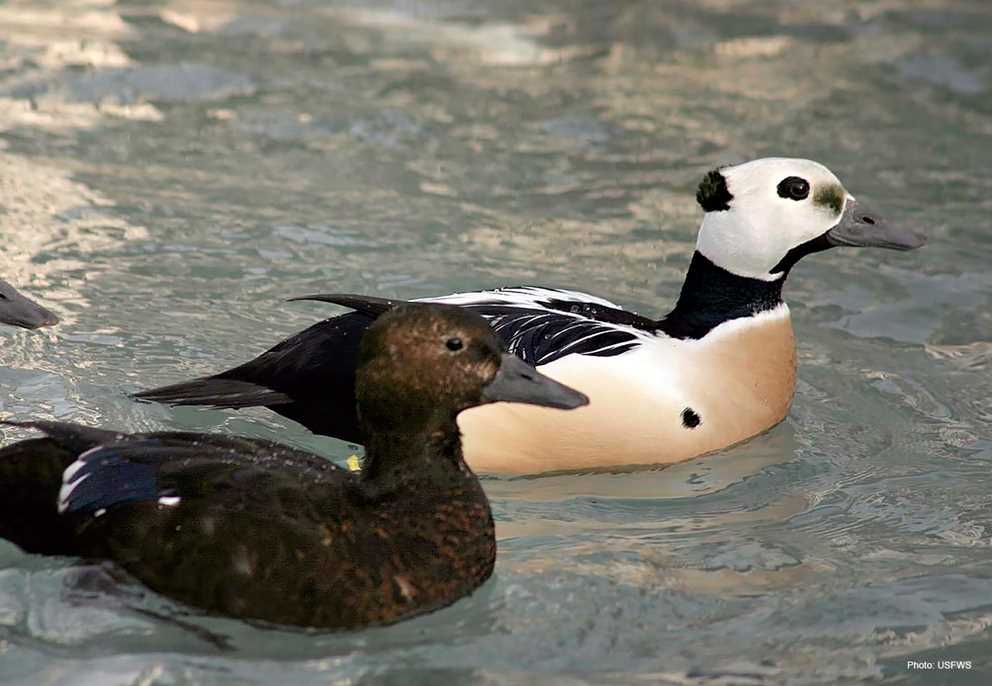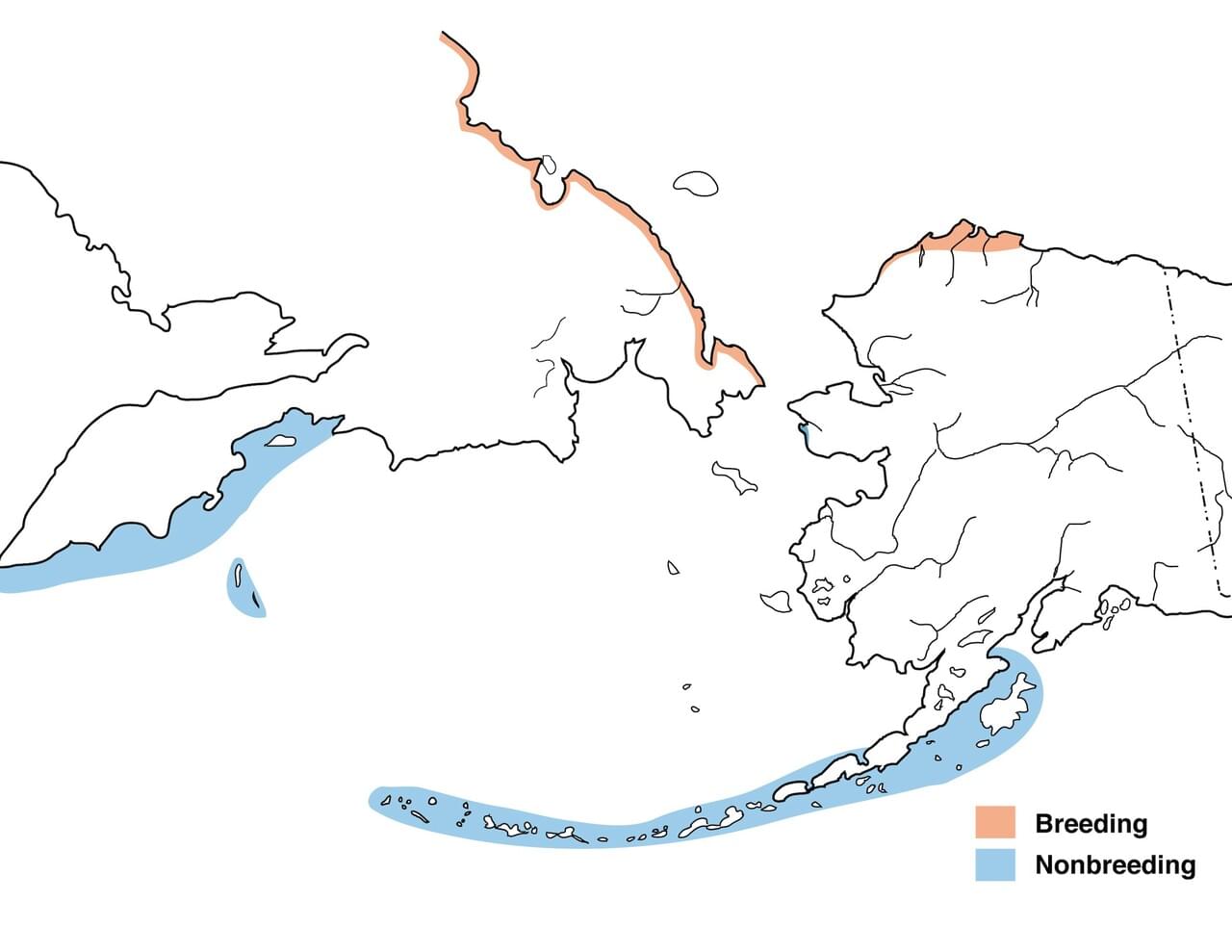Breeding
The breeding range of the Steller's eider is divided into two separate regions: Atlantic and Pacific. The majority of the Pacific population breeds along the Arctic coast of Russia and the north slope of Alaska. A small remnant population also breeds on the Yukon-Kuskokwim Delta in Alaska. The Atlantic population breeds in western Siberia. Female Steller's eiders prefer to nest on the grassy edges of tundra lakes and ponds, or within drained lake basins, and lay an average of 5-6 eggs.
Latin: Polysticta stelleri
Average length: M 18.1", F 17.5
Average weight: M 1.9 lbs., F 1.9 lbs.
Description
The Steller's eider is the smallest and fastest flying of the eiders. Its appearance is puddle-duck-like, with a head and bill reminiscent of a mallard. Male Steller's eiders have a white head with a black eye spot and a pale green patch on the crown. The wing resembles that of a wigeon, but the white shoulder patch is larger and is bordered by a blue rather than a green speculum. The chest is chestnut, and the side of the breast is marked with a circular black spot. The throat and back are black, and the bill, legs and feet are a blue-gray. Female Steller's eiders have dark brown mottled plumage and a pale buff eye ring. The speculum is blue with a white border on each side, similar to the mallard. The bill, legs and feet are blue-gray.
Food Habits
Steller's eiders feed primarily on crustaceans, mollusks, polychaete worms and aquatic insect larvae obtained in deep water, seldom near shore. They also occasionally feed on pondweeds and eelgrass.
Population
Steller's eiders are the least abundant of the eider species. In the United States and Russia their population is listed as threatened. The global population is estimated to have declined approximately 50 percent (400,000 to 220,000) since the 1960s. Reasons for this decline are unknown, but waterfowl biologists suspect the same factors contributing to the decline of spectacled eiders (lead and heavy metal poisoning) are impacting the Steller's.
Migration and Wintering
In North America, Steller's eiders winter along the Alaska Peninsula and western Aleutian Islands south to British Columbia.



